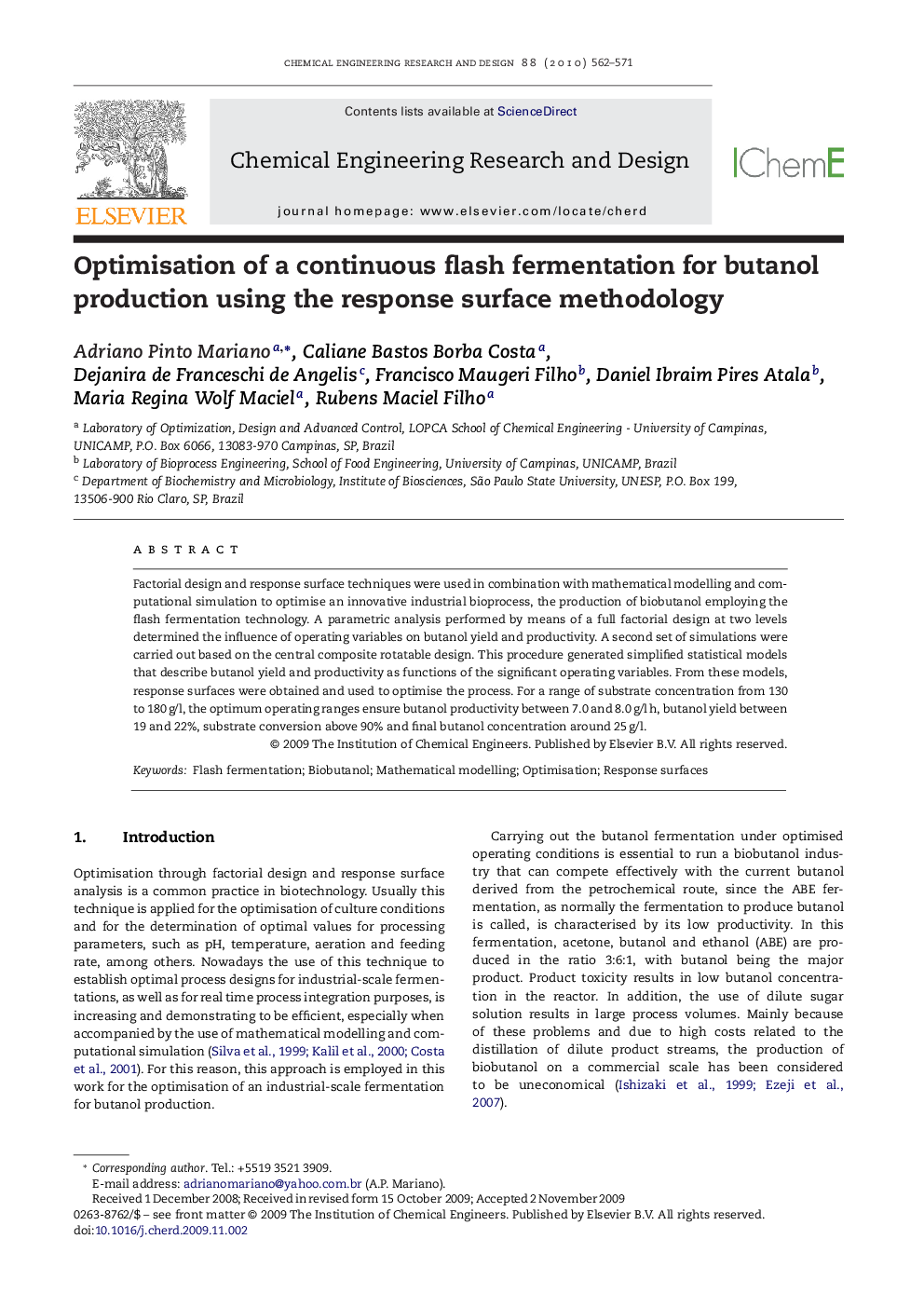| Article ID | Journal | Published Year | Pages | File Type |
|---|---|---|---|---|
| 622254 | Chemical Engineering Research and Design | 2010 | 10 Pages |
Factorial design and response surface techniques were used in combination with mathematical modelling and computational simulation to optimise an innovative industrial bioprocess, the production of biobutanol employing the flash fermentation technology. A parametric analysis performed by means of a full factorial design at two levels determined the influence of operating variables on butanol yield and productivity. A second set of simulations were carried out based on the central composite rotatable design. This procedure generated simplified statistical models that describe butanol yield and productivity as functions of the significant operating variables. From these models, response surfaces were obtained and used to optimise the process. For a range of substrate concentration from 130 to 180 g/l, the optimum operating ranges ensure butanol productivity between 7.0 and 8.0 g/l h, butanol yield between 19 and 22%, substrate conversion above 90% and final butanol concentration around 25 g/l.
